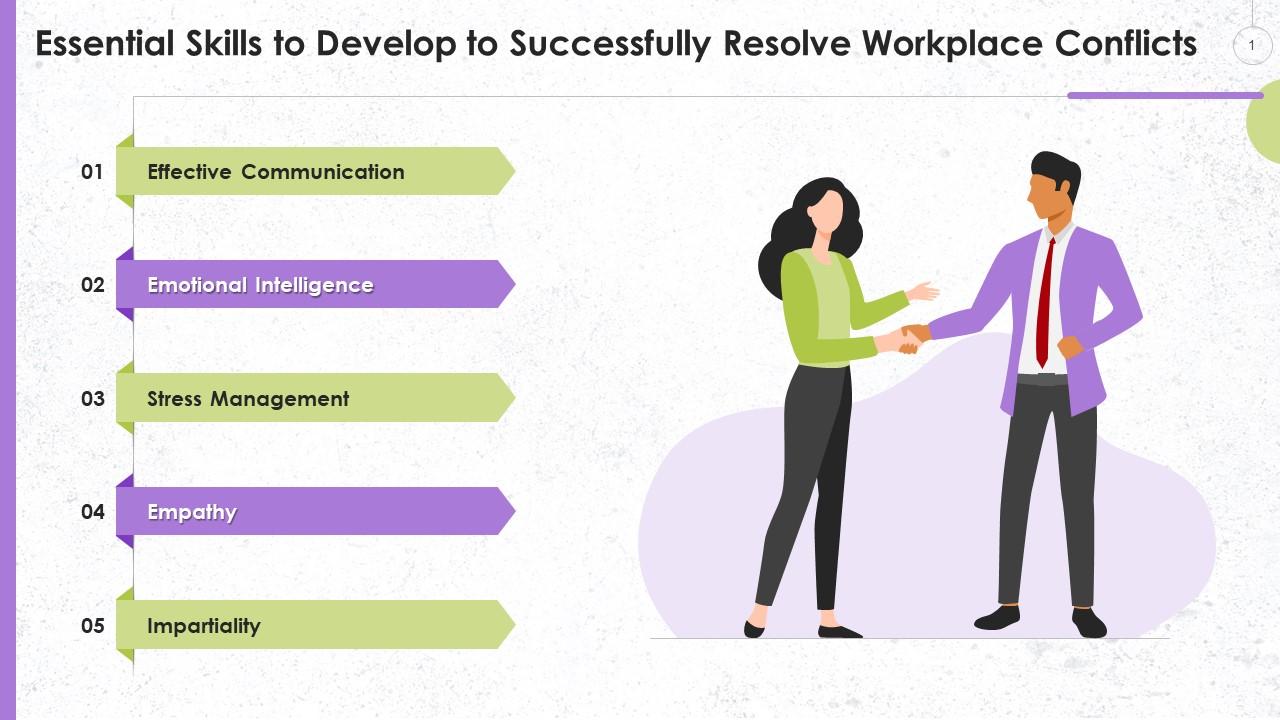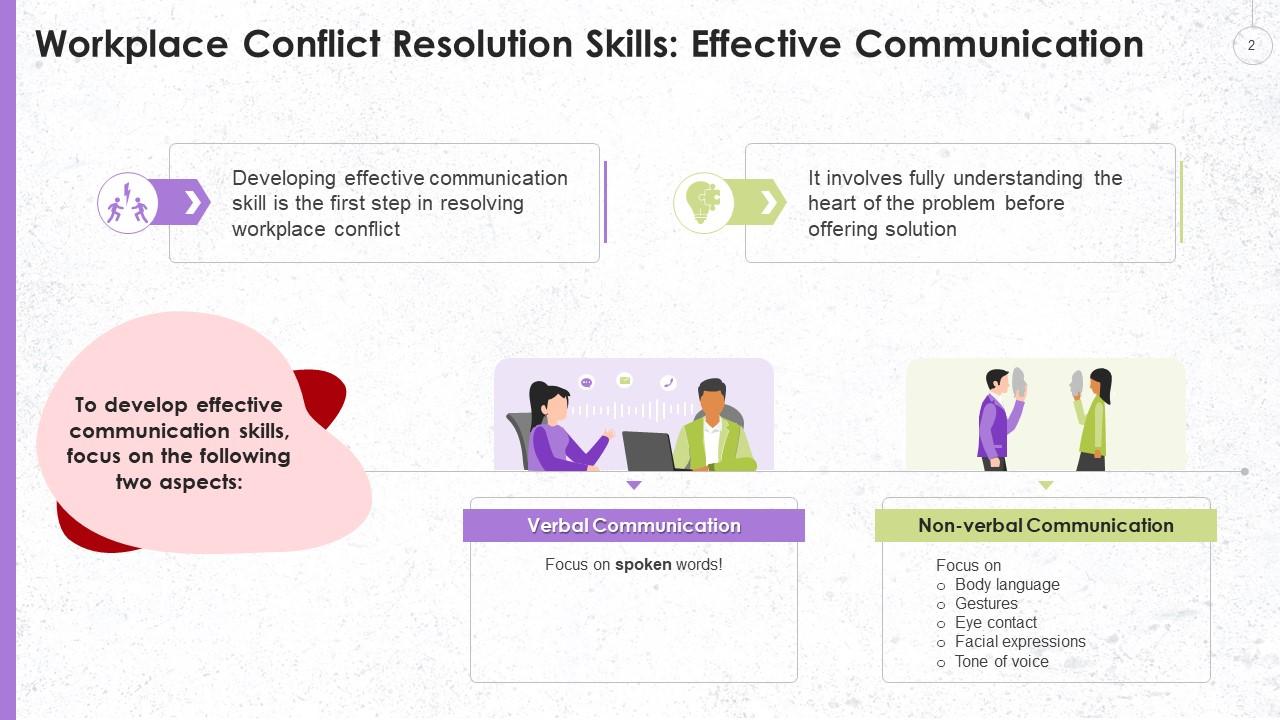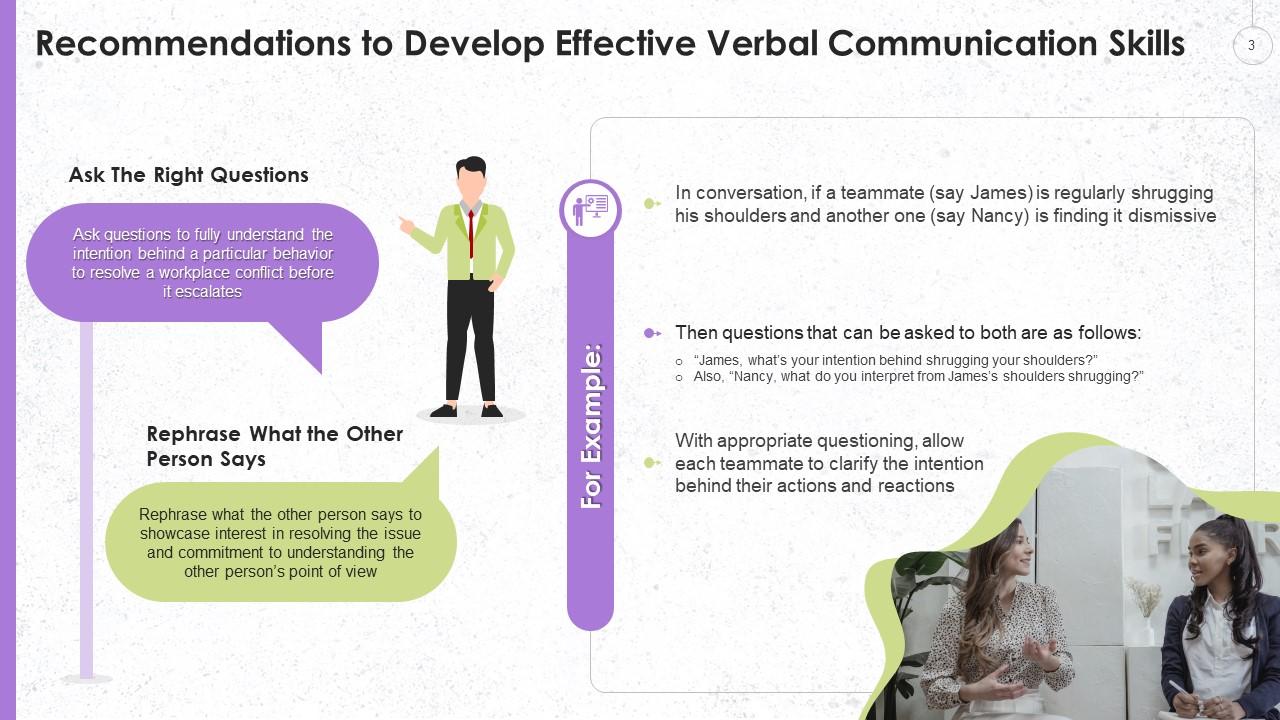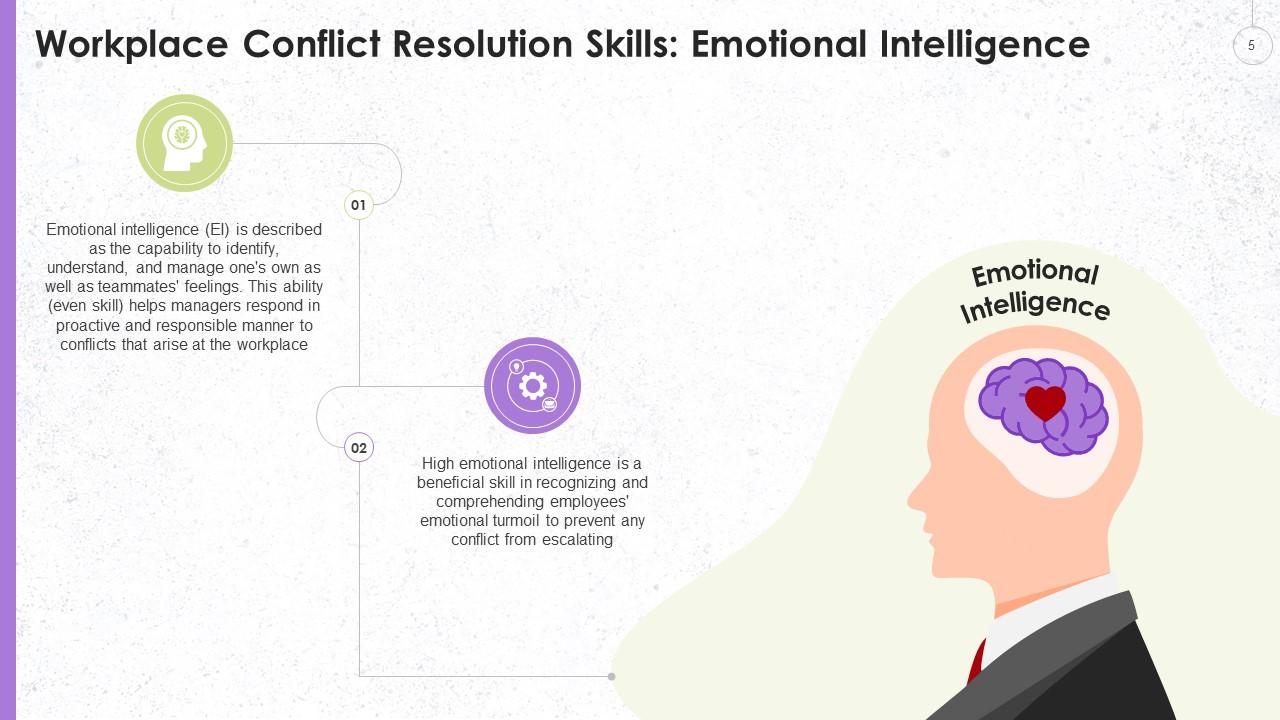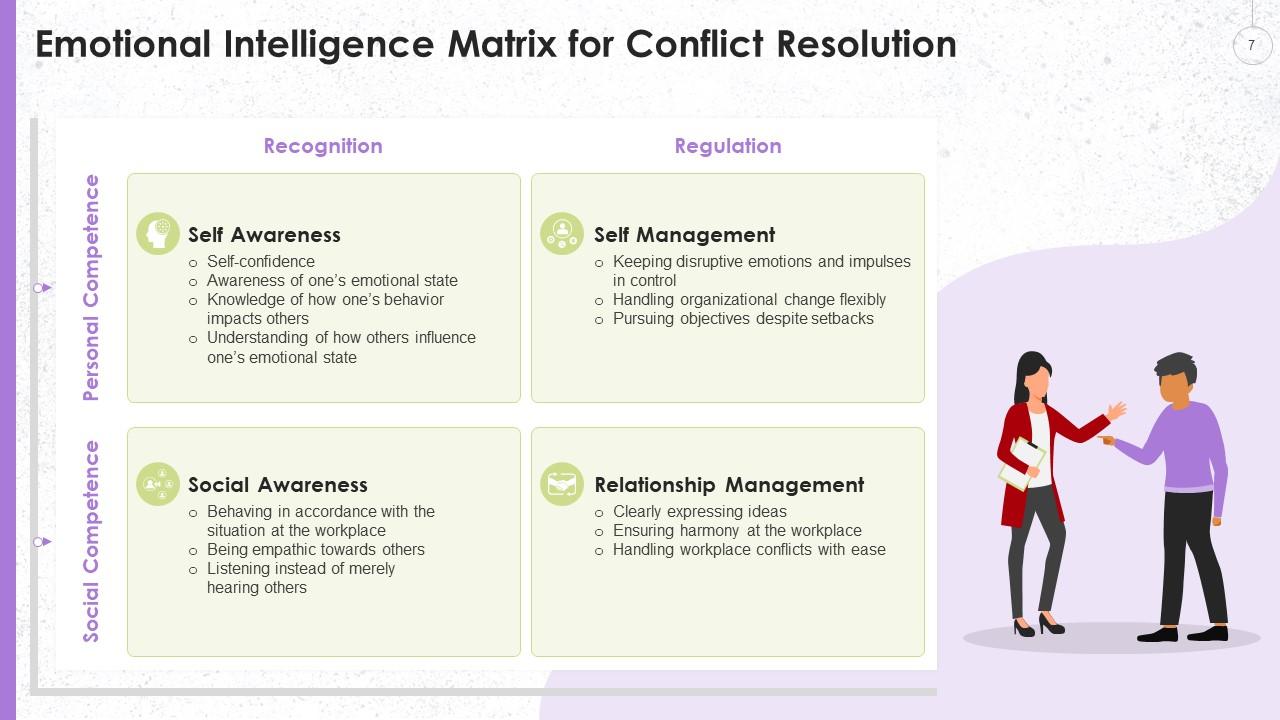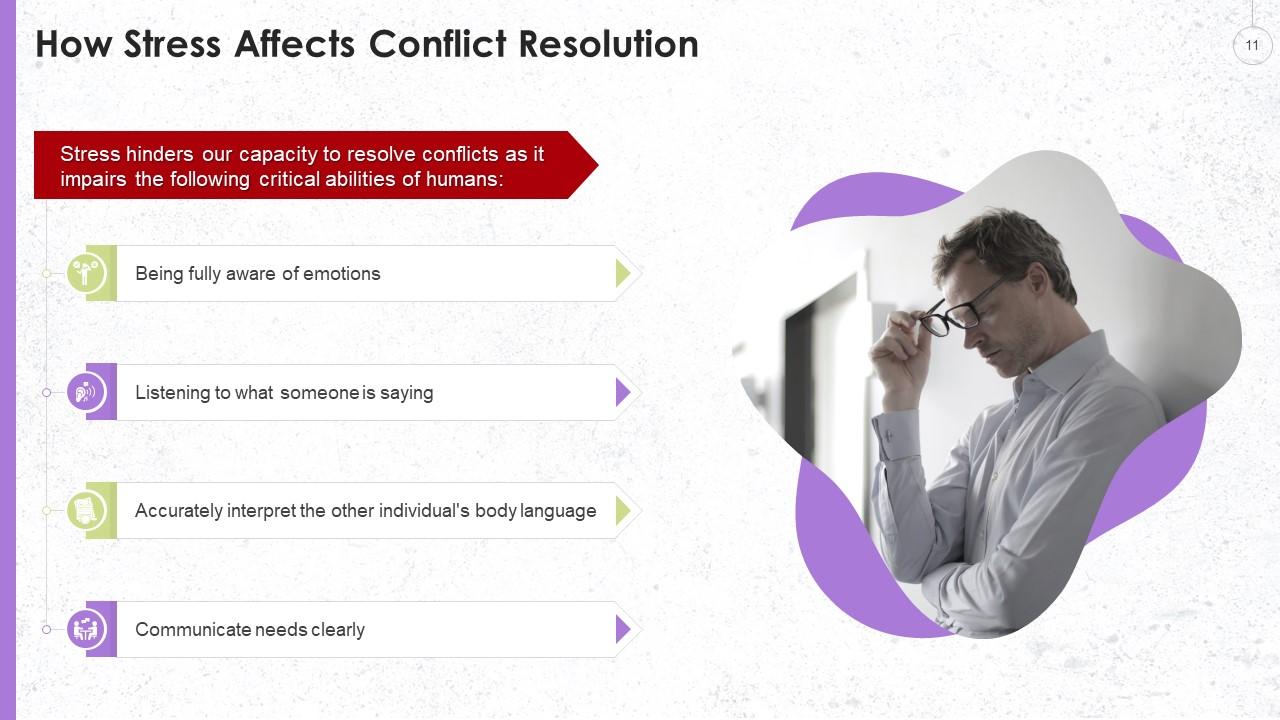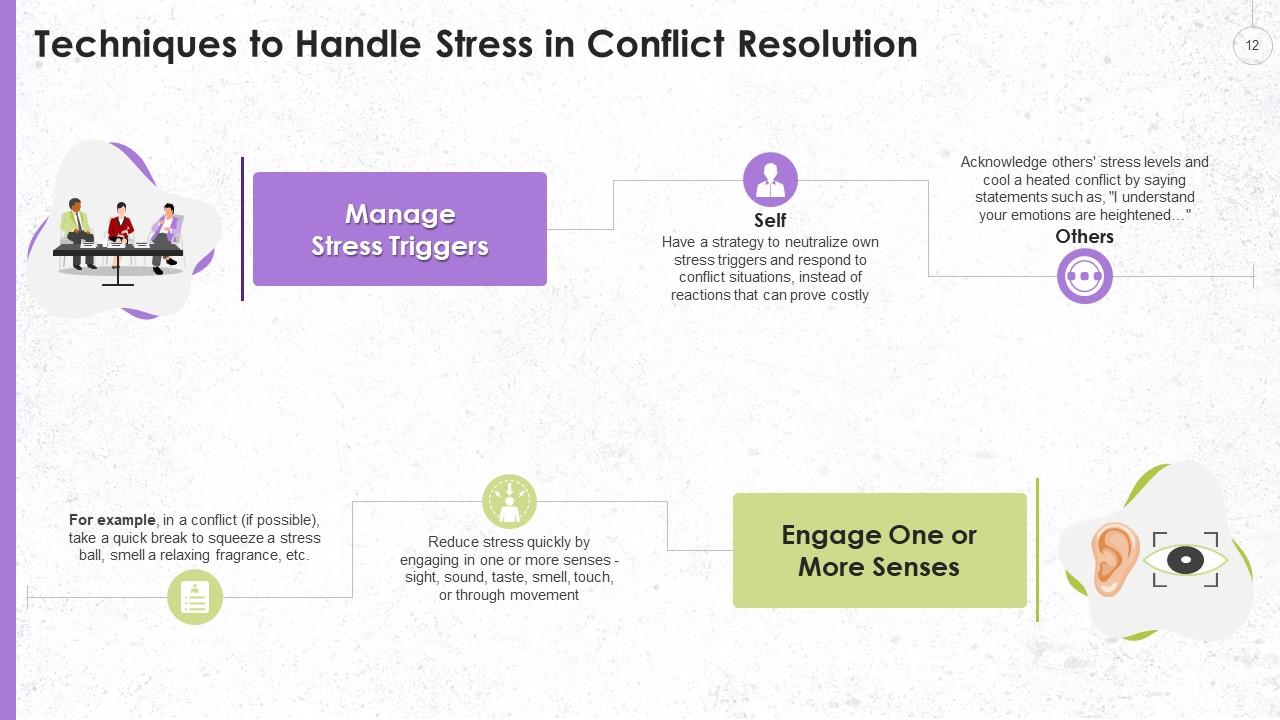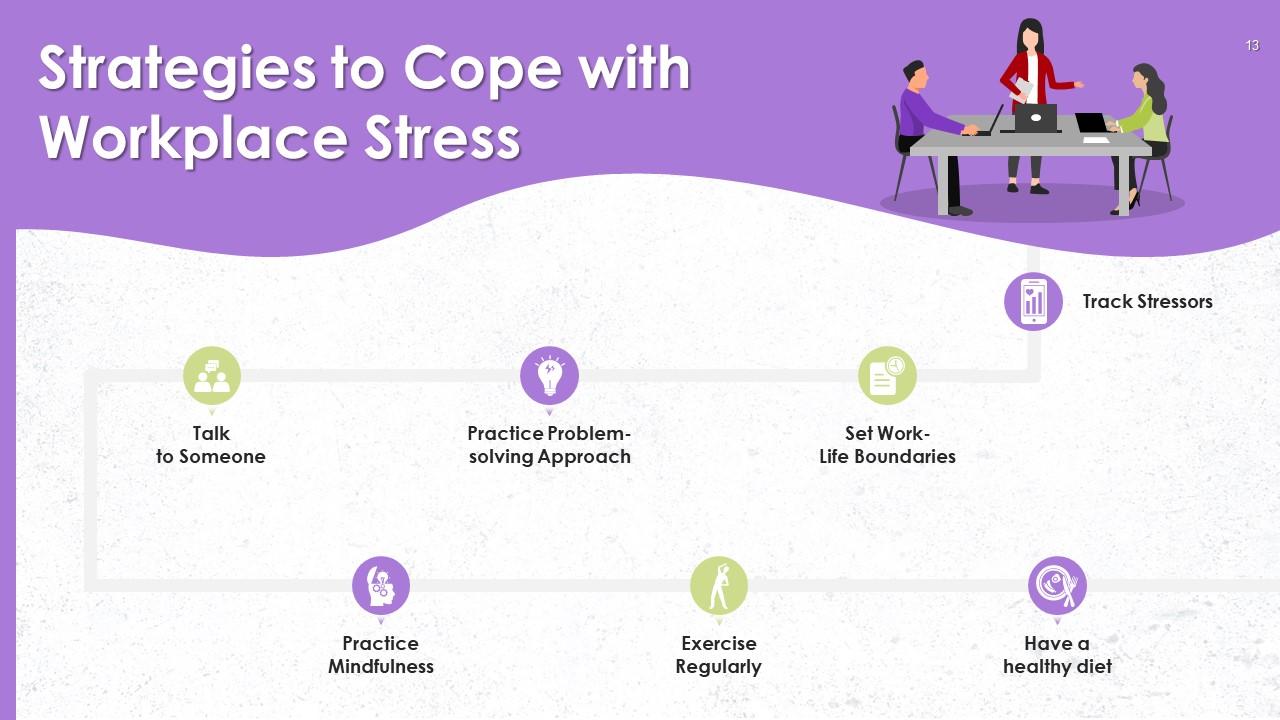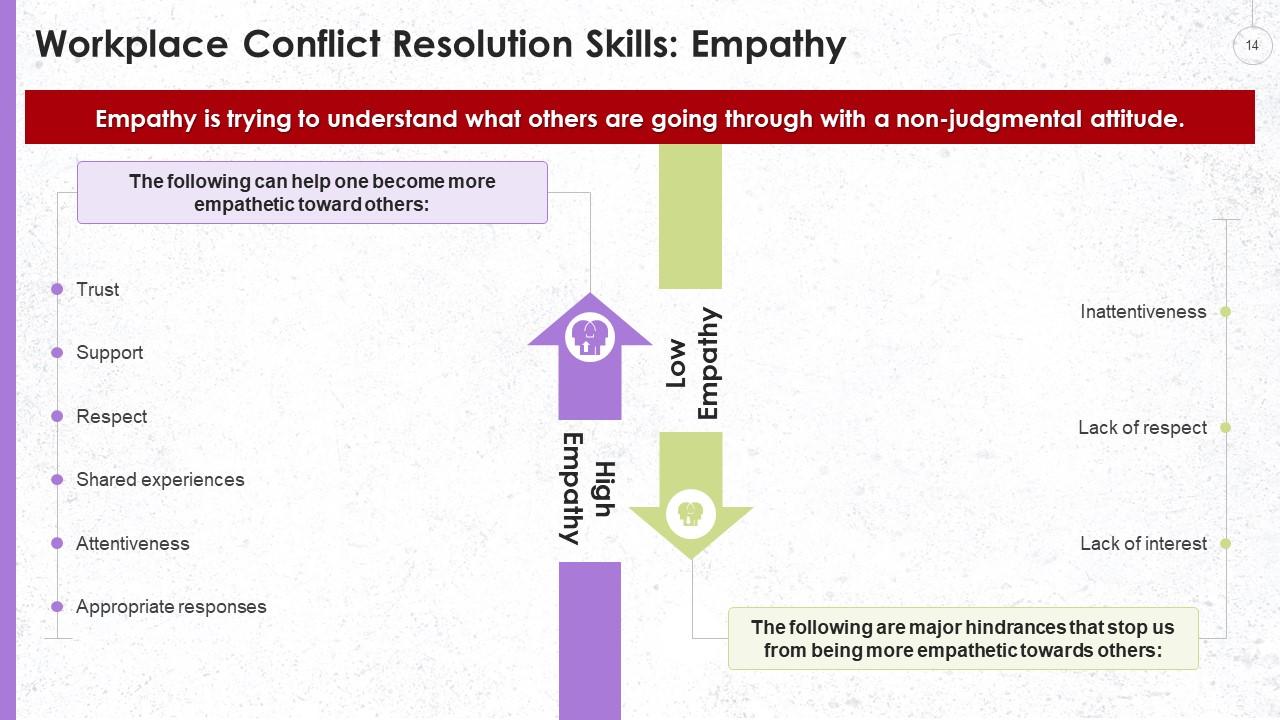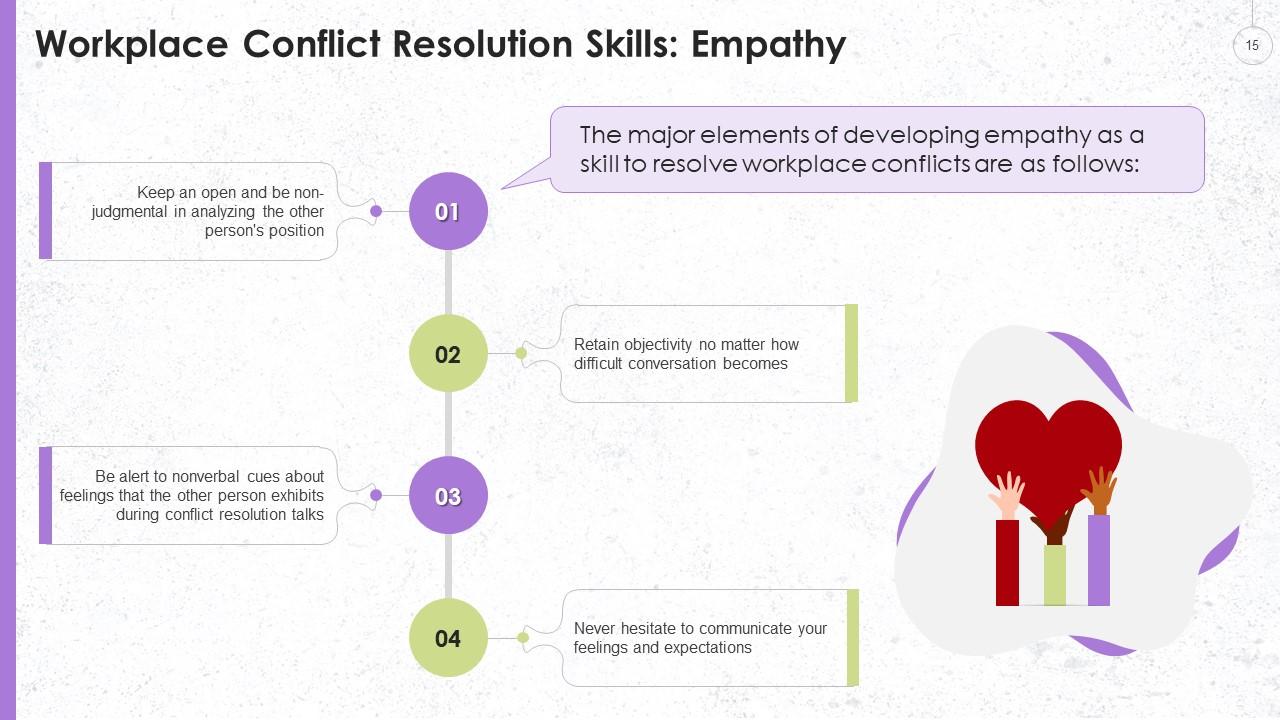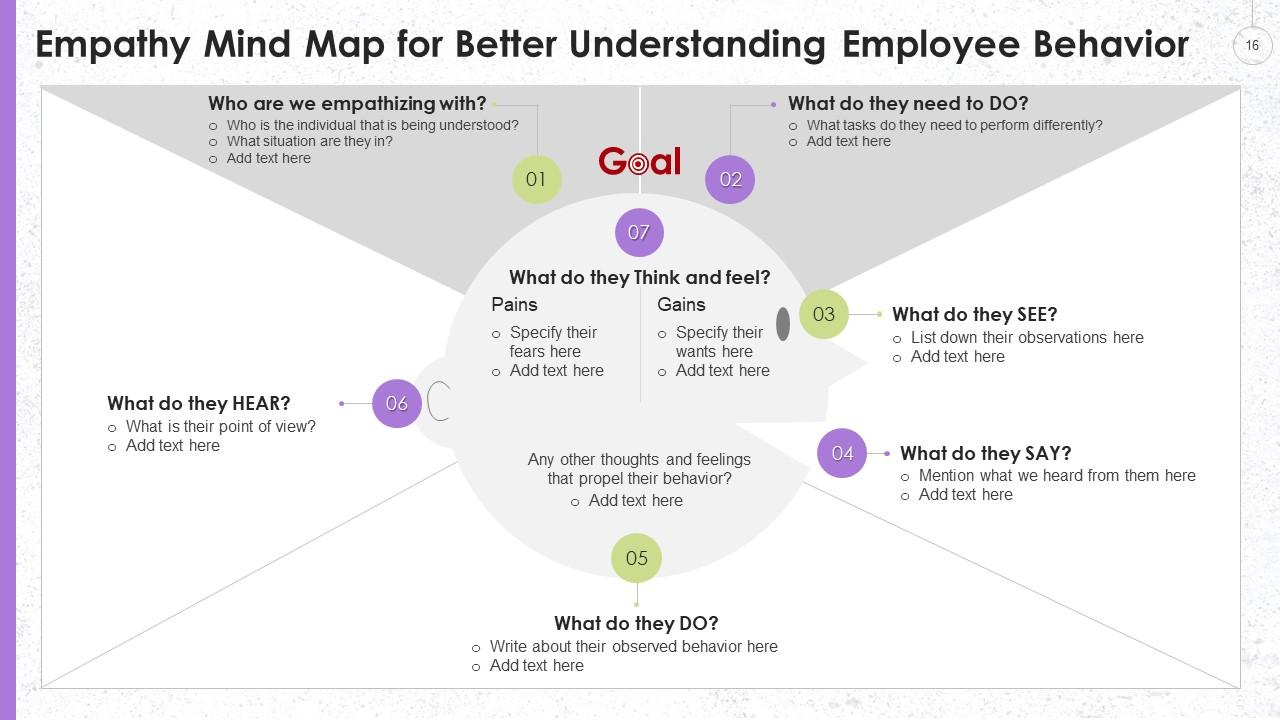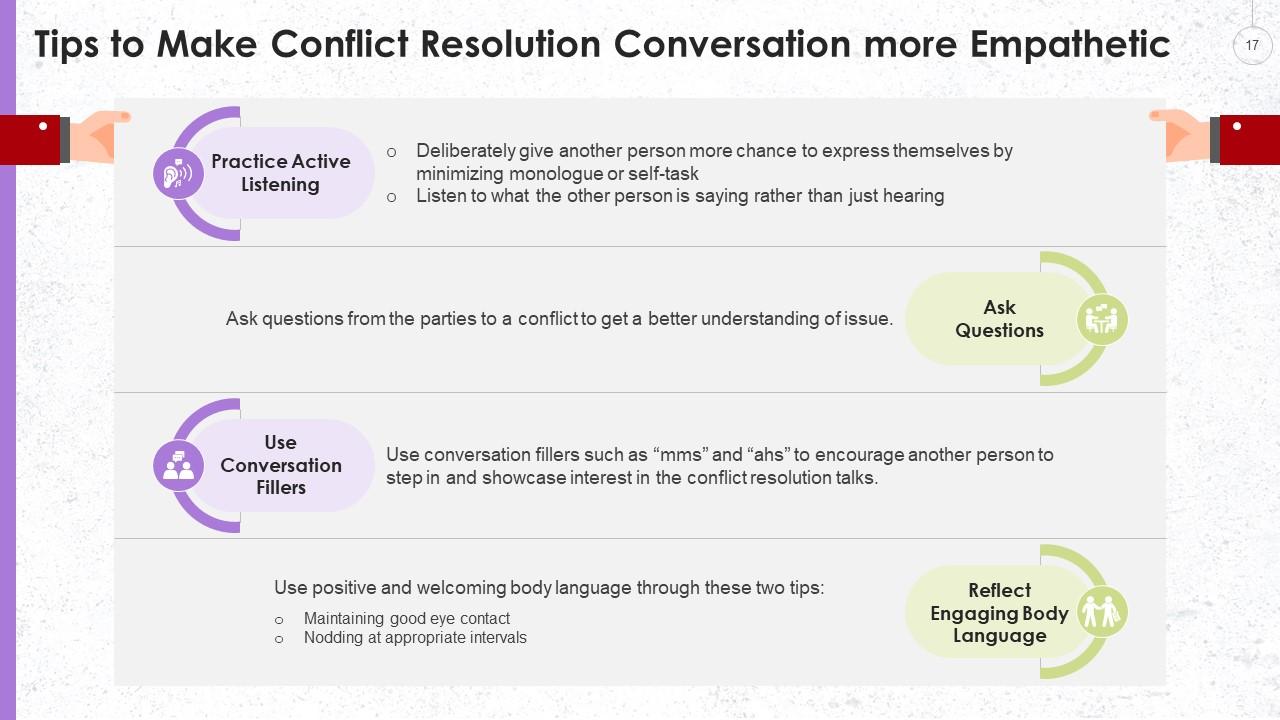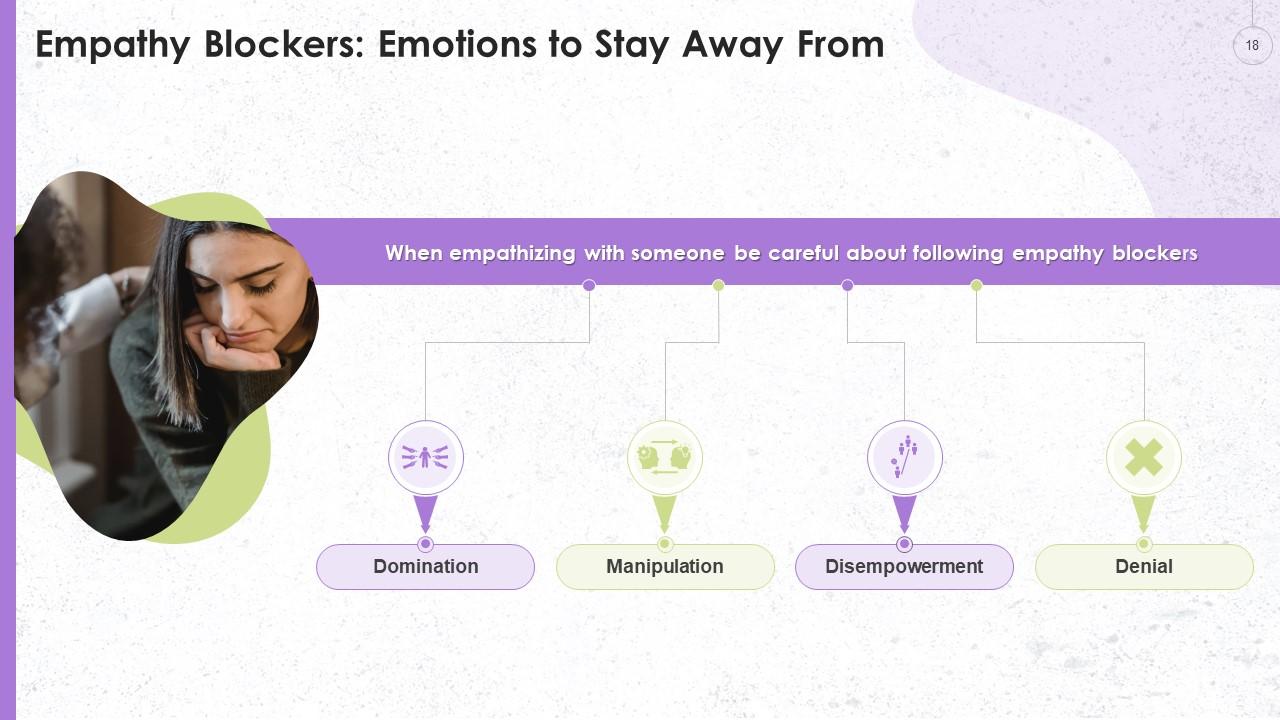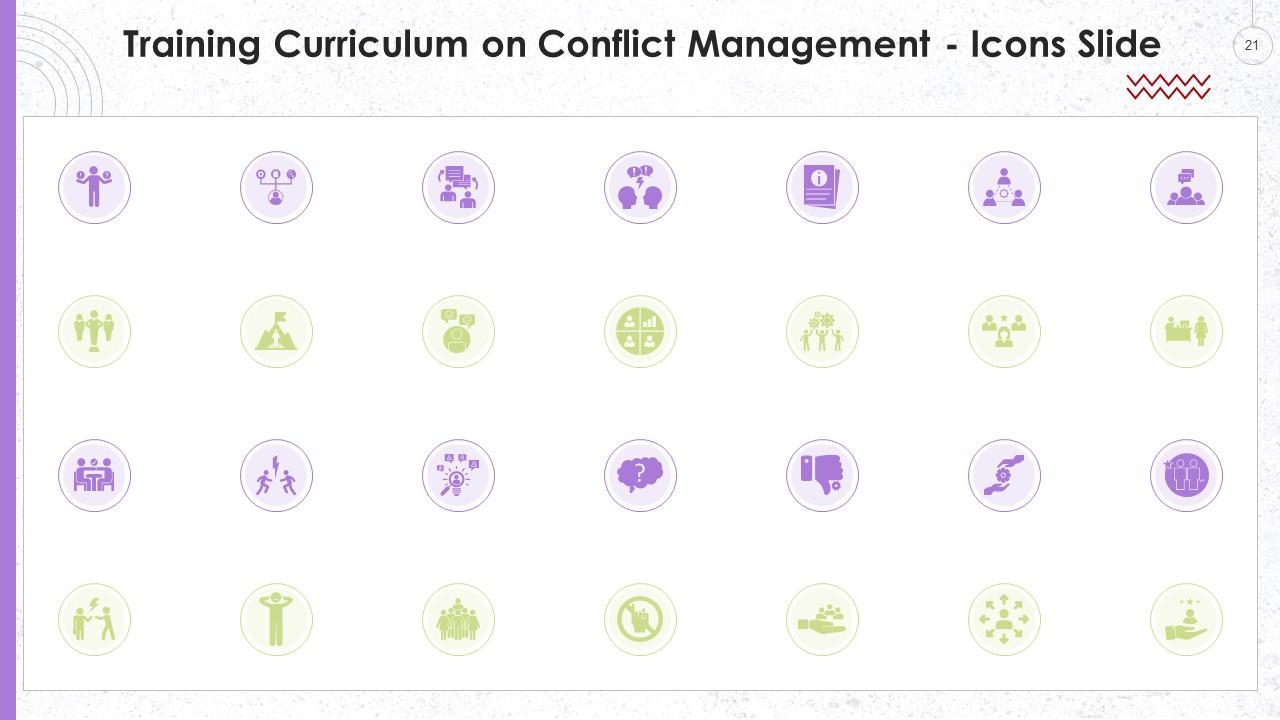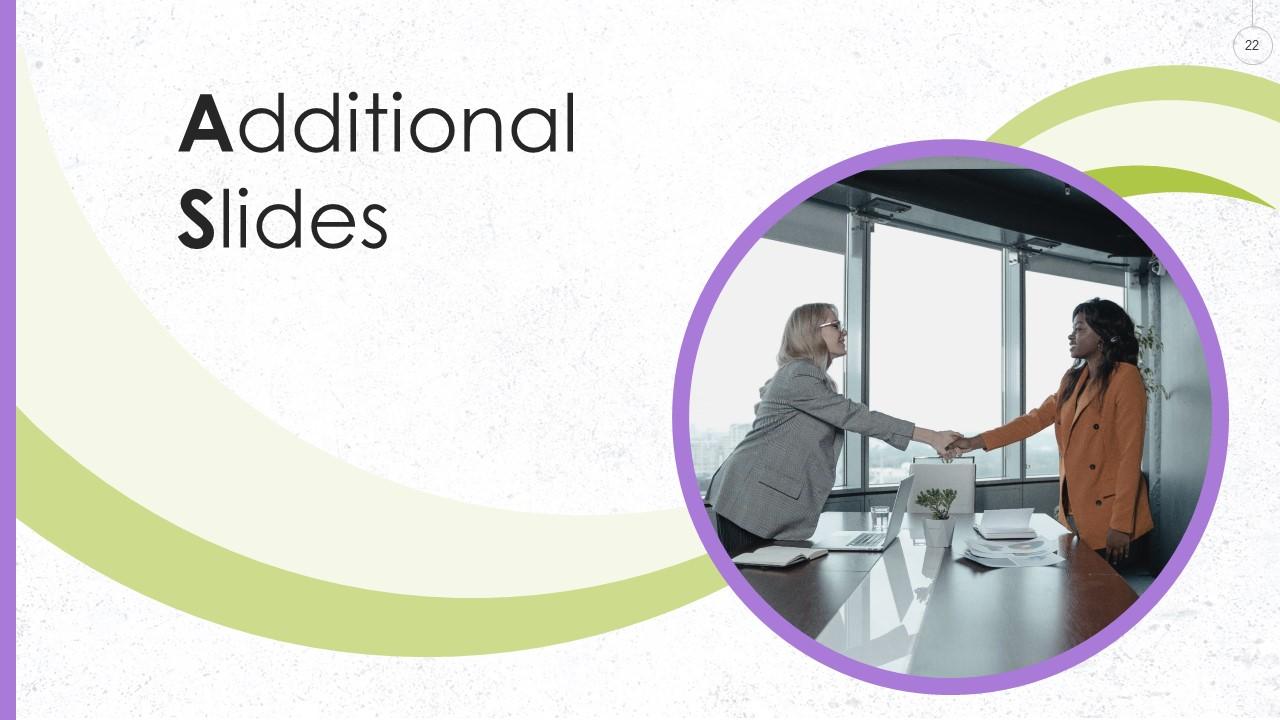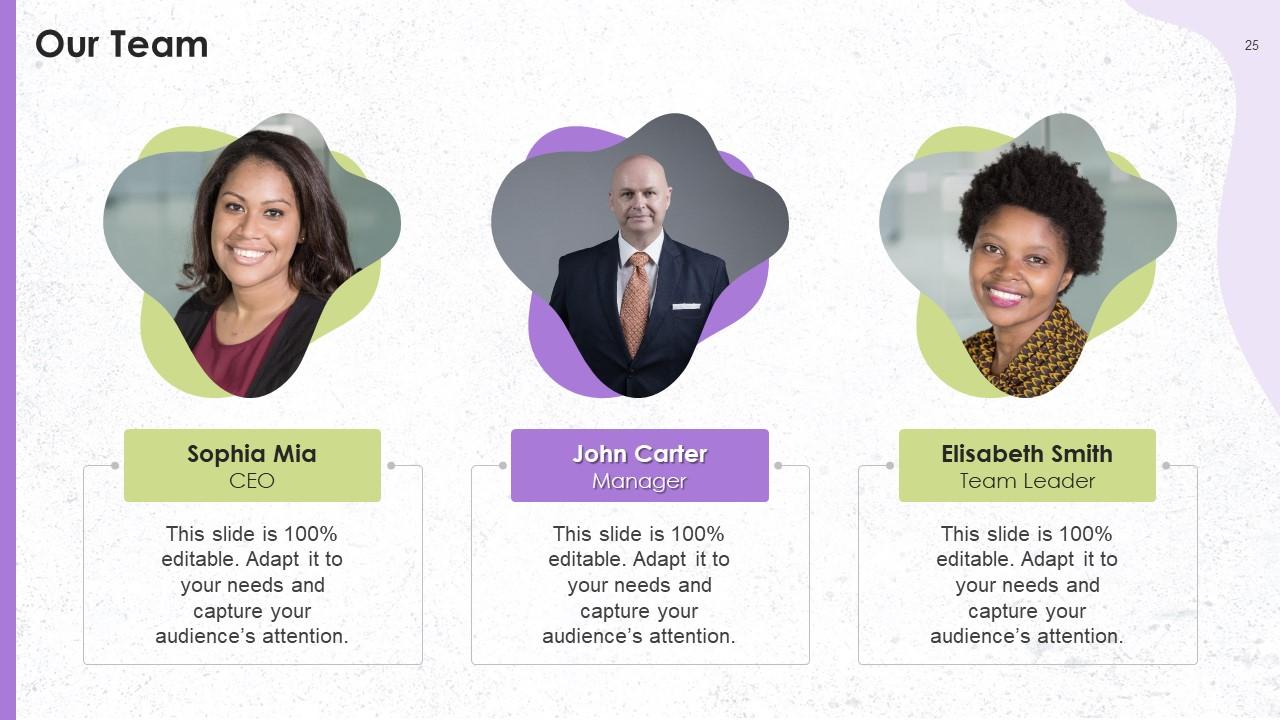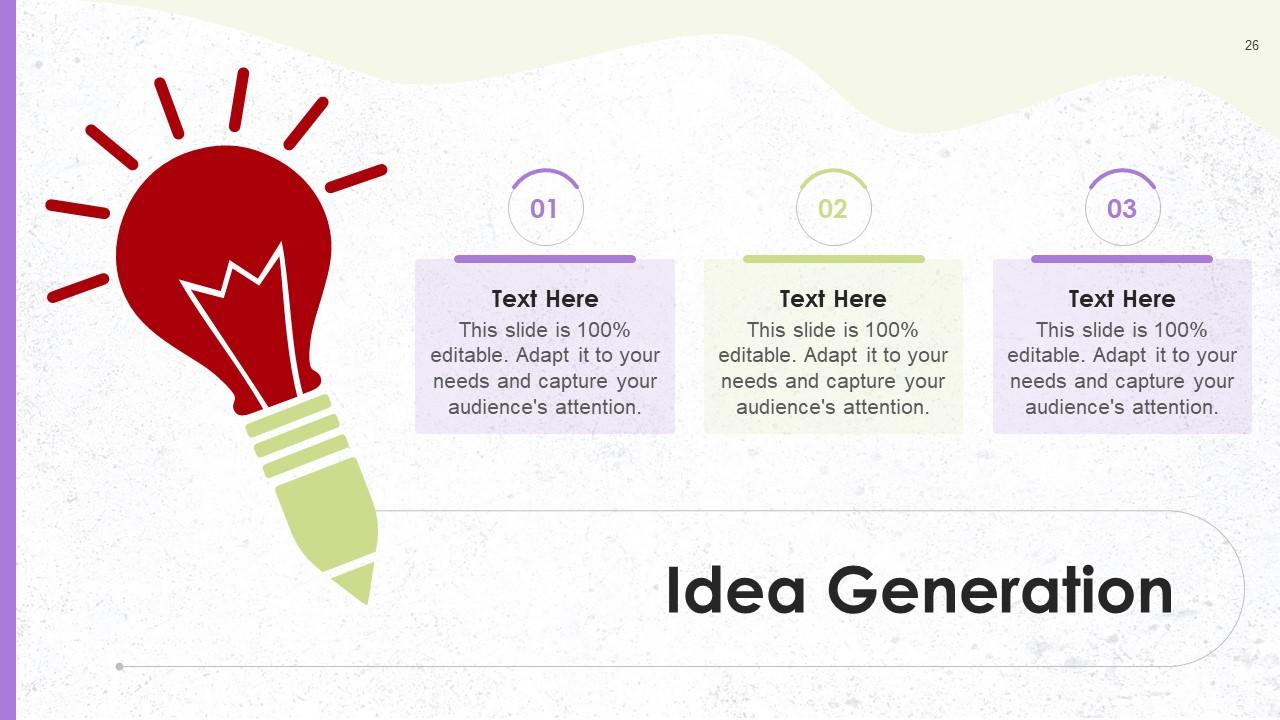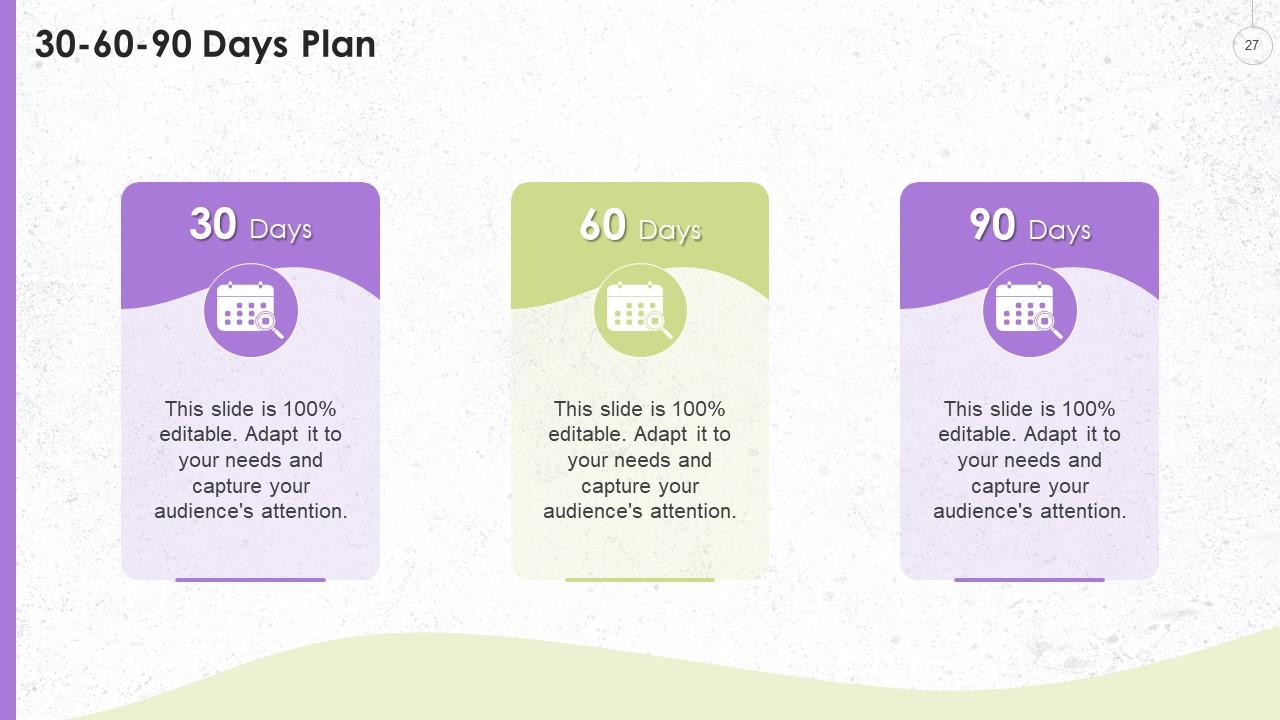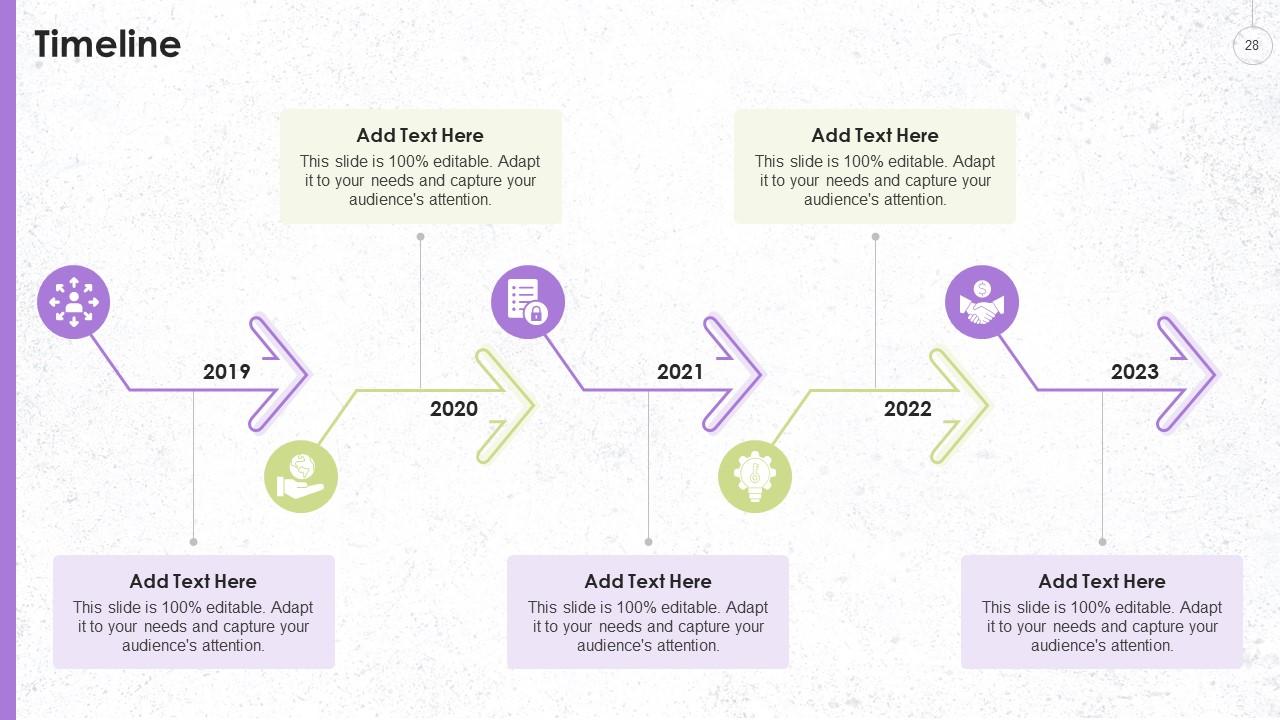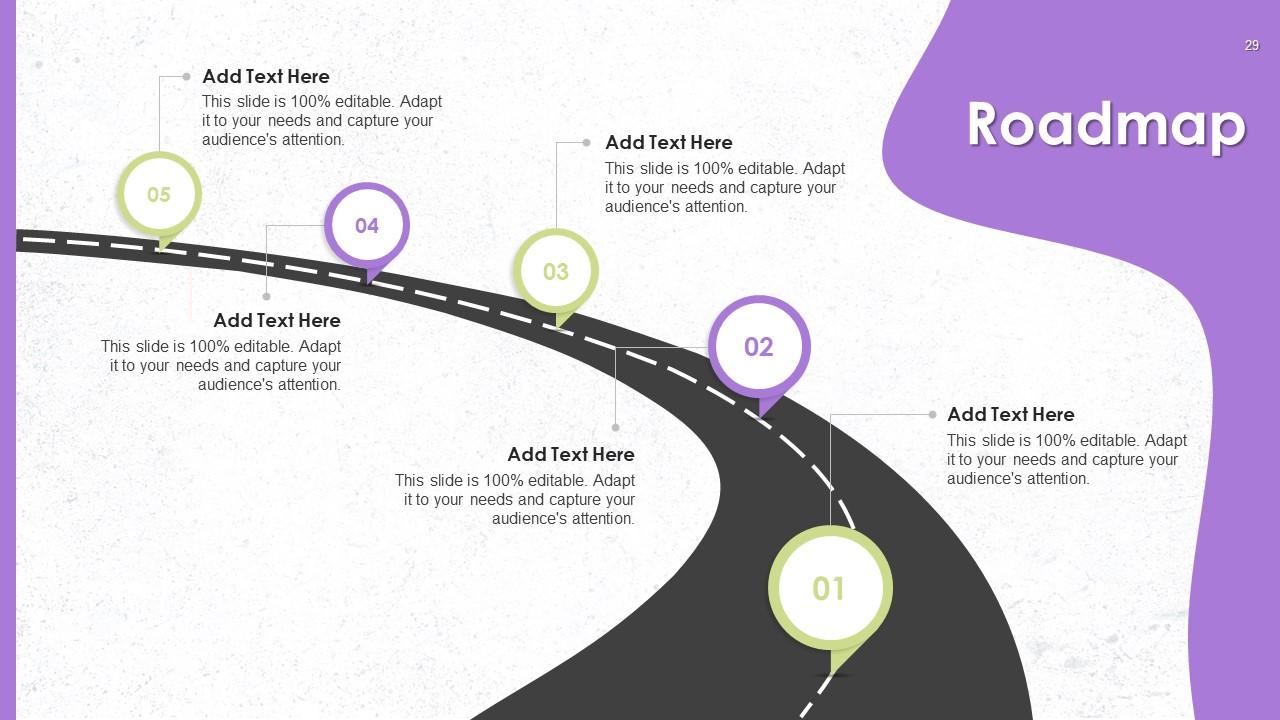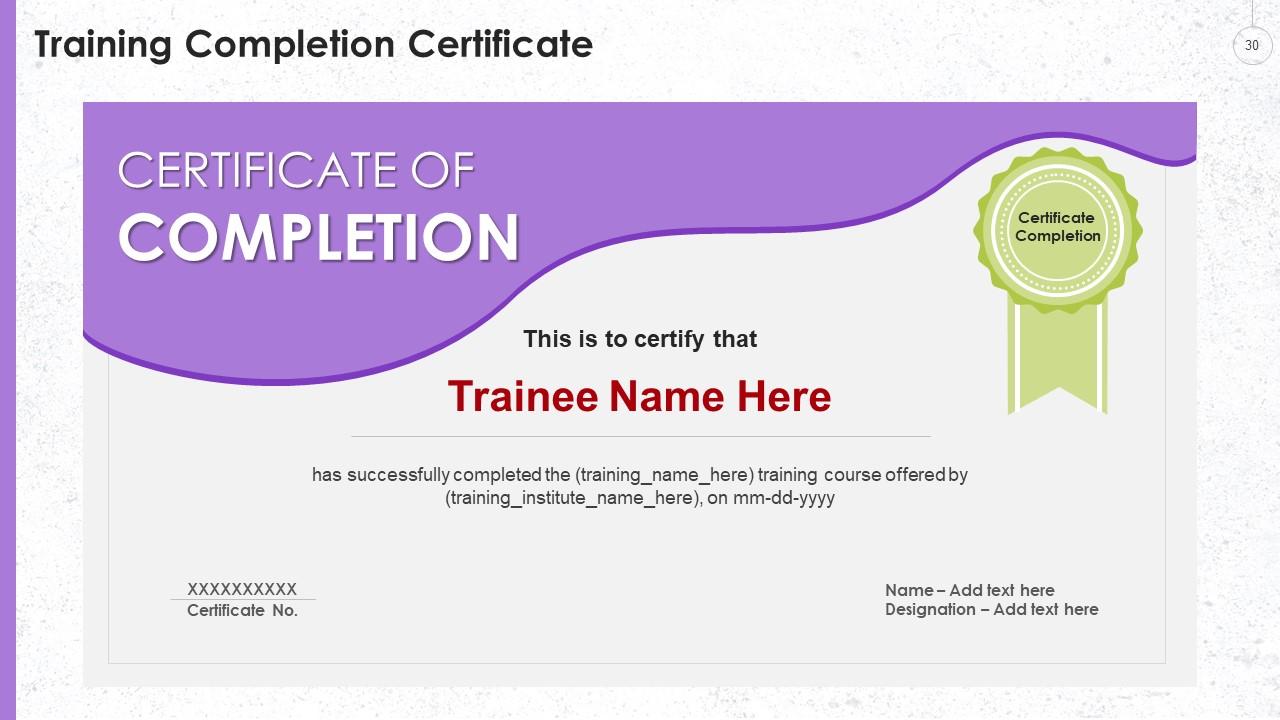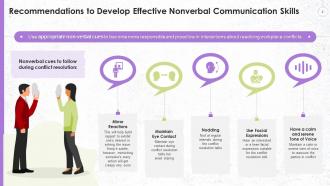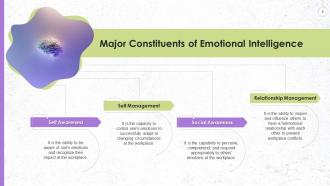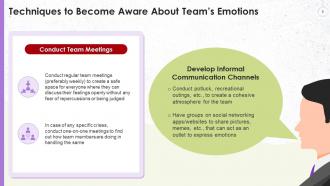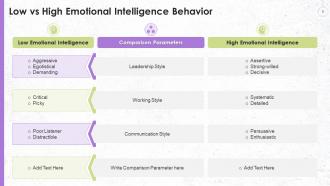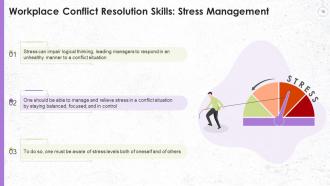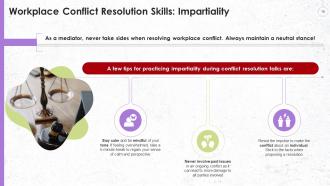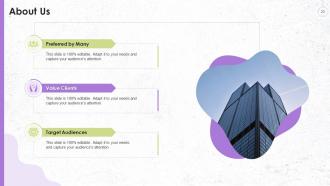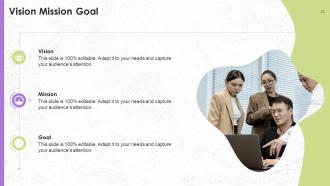Skills Needed To Resolve Conflicts Successfully Training Ppt
This set of slides in detail covers the skills employees must develop to solve workplace conflicts successfully. These are effective communication, high emotional intelligence, stress management, empathy towards others, and impartiality.
- Google Slides is a new FREE Presentation software from Google.
- All our content is 100% compatible with Google Slides.
- Just download our designs, and upload them to Google Slides and they will work automatically.
- Amaze your audience with SlideTeam and Google Slides.
-
Want Changes to This PPT Slide? Check out our Presentation Design Services
- WideScreen Aspect ratio is becoming a very popular format. When you download this product, the downloaded ZIP will contain this product in both standard and widescreen format.
-

- Some older products that we have may only be in standard format, but they can easily be converted to widescreen.
- To do this, please open the SlideTeam product in Powerpoint, and go to
- Design ( On the top bar) -> Page Setup -> and select "On-screen Show (16:9)” in the drop down for "Slides Sized for".
- The slide or theme will change to widescreen, and all graphics will adjust automatically. You can similarly convert our content to any other desired screen aspect ratio.
Compatible With Google Slides

Get This In WideScreen
You must be logged in to download this presentation.
PowerPoint presentation slides
Presenting Skills Needed to Resolve Conflicts Successfully. These slides are 100 percent made in PowerPoint and are compatible with all screen types and monitors. They also support Google Slides. Premium Customer Support available. Suitable for use by managers, employees, and organizations. These slides are easily customizable. You can edit the color, text, icon, and font size to suit your requirements.
People who downloaded this PowerPoint presentation also viewed the following :
Content of this Powerpoint Presentation
Slide 1
This slide showcases key skills that an individual should develop to resolve workplace conflicts successfully. The key skills listed are effective communication, emotional intelligence, stress management, empathy, and impartiality.
Slide 2
This slide provides an overview of the significance of effective communication in resolving workplace conflict. It also includes information about both the verbal and non-verbal components of communication.
Slide 3
This slide indicates how to prevent workplace disagreements from escalating by asking the right questions, and rephrasing what the other person is saying to showcase your genuine interest in resolving the conflict.
Slide 4
This slide lists multiple nonverbal cues that prove to be effective in resolving workplace conflicts, such as mirroring reactions, maintaining eye contact, nodding, using facial expressions, and adopting a calm tone of voice.
Slide 5
This slide provides information about the definition of emotional intelligence i.e., the capability to identify, understand, and manage one's own as well as teammates' feelings to respond in a proactive and non-reactive way in conflict situations at the workplace. It also explains how high EI is a beneficial skill in recognizing and comprehending employees' emotional turmoil and use this to prevent any conflict from escalating.
Slide 6
This slide provides an overview of major components of emotional intelligence as a skill. These are self- awareness, self- management, social awareness, and relationship management.
Slide 7
This slide presents the four-quadrant matrix to resolve workplace conflict using Emotional Intelligence. The major quadrants of 2-by-2 EI framework are self-awareness, self-management, social awareness, and relationship management.
Slide 8
This slide indicates the strategies to become aware of the team’s emotions to minimize workplace conflict. The techniques highlighted are conducting team meetings and developing informal communication channels.
Slide 9
This slide showcases the difference between low and high emotional intelligence people at the workplace in terms of leadership, working, and communication style.
Slide 10
This slide provides information on adverse impacts of stress, i.e., impairment of logical thinking. It also contains details on how effectively releasing stress in a tense situation can prevent conflicts from escalating.
Slide 11
This slide lists the multiple ways in which stress hampers workplace conflict resolution. Stress directs hits our ability to detect and be aware of emotions; interpreting the other person's body language; communication of our needs in a clear manner.
Slide 12
This slide highlights multiple methods to handle stress in conflict resolution, i.e., managing stress triggers and engaging one or more senses while interacting with parties in conflict.
Slide 13
This slide illustrates multiple approaches to handling workplace stress effectively. The strategies are tracking stressors, setting work-life boundaries, practicing problem-solving, talking to someone, practicing mindfulness, exercising regularly, and eating healthily.
Instructor's Notes:
Strategies to deal with workplace stress are:
- Track Stressors: Keep a note of things that cause you stress; it may be activity, a person a situation. Identify a pattern, if any, and limit exposure to these stressors. Limit exposure to such activities
- Set Work-Life Boundaries: Draw well-defined work-life boundaries and stick to these. For example, avoid checking work emails at home
- Practice Problem-solving Approach: Deploy the problem-solving approach to complex tasks using specific steps like defining a problem, brainstorming solutions, and developing an action plan.
- Talk to Someone: Seek guidance from someone senior in the organization to put things in perspective
- Practice Mindfulness: Practice mindfulness to tackle stress at work as it allows you focus on the present with a mindset of openness, acceptance, and curiosity.
- Exercise Regularly: Do regular exercise to lift mood and increase energy levels; physical activity releases endorphins that act as natural painkillers.
- Balanced Diet: Stress can lead to chronic overeating, especially food with high sugar. Regular consumption of unhealthy food in an invite to ill-health
Slide 14
This slide provides information regarding the definition of empathy. It also details habits/strategies that can help one become more empathetic towards others. These are offering trust, support, respected, shared experiences and responses that come from kindness and caring.
Slide 15
This slide highlights how empathy can be used to resolve workplace conflicts. The key is retaining objectivity no matter how difficult the conversation becomes; being non-judgmental in understanding the other's stated position or point of view.
Slide 16
This slide showcases the empathy mind map to understand employee behavior better to prevent workplace conflicts. The major sections of the empathy mind map are who are we empathizing with? What do they need to do? What do they think and feel?
Slide 17
This slide showcases the strategies to make conflict resolution talks more empathetic, such as practicing active listening, asking questions, using conversation fillers, and body language that welcomes and encourages others to vent out. Appropriate eye contact is an absolute must.
Slide 18
This slide highlights the major empathy blockers that one must be careful about such as domination, manipulation, disempowerment, and denial. When empathy blocker statements are used, it leads to conversation closure. These are a complete NO-NO during conflict resolution talks.
Instructor's Notes:
The major empathy blockers that limit conflict resolution conversations are:
Domination:
- Threatening: “Do it or else.”
- Ordering: “Don’t ask me why. Just do it because I said so.”
- Criticizing: “You don’t work hard enough.”
- Name-Calling: “You’re neurotic.”
Manipulation:
- Withholding Relevant Information: “If you knew the “big picture” you would see it differently.”
- Interrogating (Micro-managing): “How many hours did this take you?”
- Praising to Manipulate: “You are so good at report writing, I would like you to do this one.”
Disempowerment:
- Diagnosing Motives: “You are very possessive.”
- Untimely Advice: “Why didn’t you do it this way?”
- Changing the Topic: “Yes, it is a worry…by the way, did I tell you I applied for a new job?”
- Persuading with Logic: “There’s nothing to be upset about, and it’s all quite reasonable. We do this, and then we do that.”
- Topping: “I crashed the car last week,” and you follow with “When I smashed up my car.”
Denial:
- Refusing to Address the Issue: “There is nothing to discuss as I cannot see any problem.”
- Reassuring: “Don’t be nervous.”
When empathy blocker statements are used, it leads to conversation closure, so one must avoid them as much as possible during conflict resolution talks.
Slide 19
This slide lists the multiple tips to practice impartiality during conflict resolution talks, such as staying calm and mindful of tone, not involving past issues in an ongoing conflict, and never turning the conflict as being only about an individual.
Skills Needed To Resolve Conflicts Successfully Training Ppt with all 35 slides:
Use our Skills Needed To Resolve Conflicts Successfully Training Ppt to effectively help you save your valuable time. They are readymade to fit into any presentation structure.
-
The PPT layout is great and it has an effective design that helps in presenting corporate presentations. It's easy to edit and the stunning visuals make it an absolute steal!
-
Wonderful ideas and visuals. I'm really pleased with the templates, which are unique and up to date.


